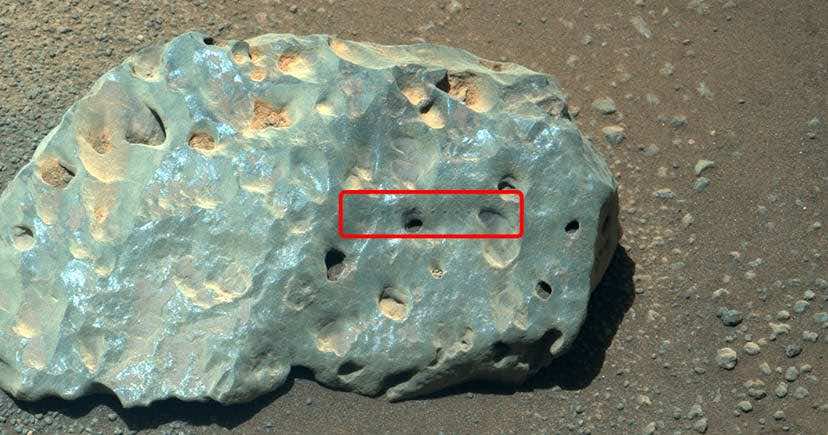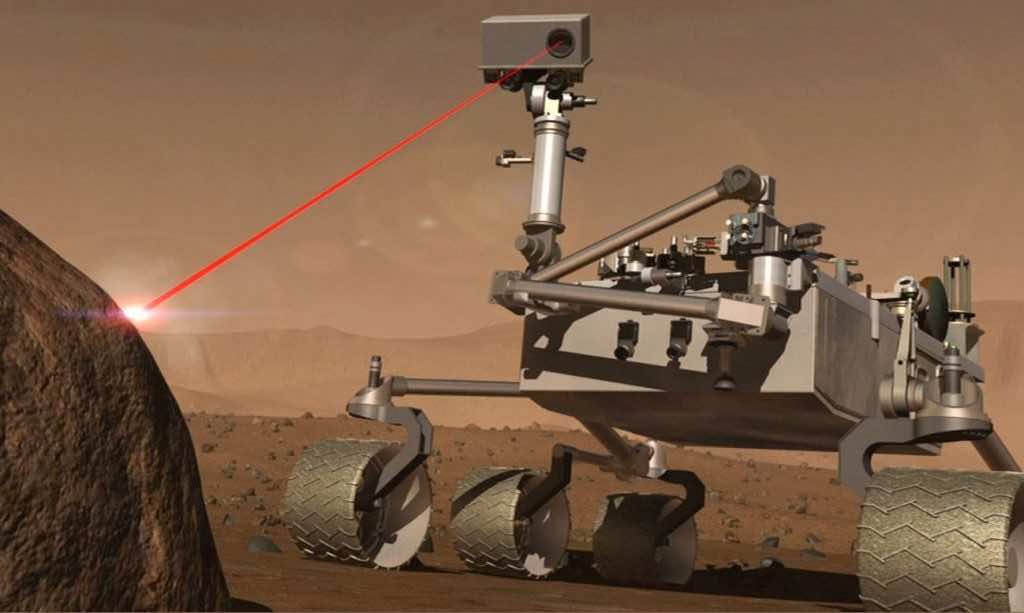NASA’s Perseverance Rover has done some artwork on the red planet, with its laser beam playing the part of paint and rock as the surface.
The latest from NASA are pictures of rock from Mars with laser holes in it. Percy was on a roll on the red planet when it decided to experiment making holes in a rock, or maybe it’s the Perseverance Rover’s way of killing time up there.
A special camera was recording the effects closely when the car-sized rover on Mars made holes in the rock. Leaving the scientists and researchers with loads of hypotheses for a while.
“While the helicopter is getting ready, I can’t help checking out nearby rocks,” the rover’s official account wrote in a tweet today. “This odd one has my science team trading lots of hypotheses.”
The zoomed-in picture of the 6-inch rock from Mars shows numerous holes on it; some are deep, and others are just on its surface. A closer look further reveals the laser marks while it shifted from one point to another, making holes on the rock with the laser that lifts the temperature to 18,000 Fahrenheit.
The Rover’s official Twitter account Tweeted, “If you look closely, you might spot the row of laser marks where I zapped it to learn more.” In the picture below, laser zapping signs can be seen towards the right side of the rock. It is the spot where the Martian Rover’s powerful laser penetrated the outer surface of the rock.

Such experiments are a treat for scientists and researchers. The laser holes are a provision of deep insight into the given rock’s organic makeup. A special camera recorded the laser zapping and its effects to gather all the experiment’s minute details. The video recording and the images will enable researchers to learn more about biosignatures and signs of previous microbial life on the red planet.
Before revealing the images of a six-inch rock with laser holes, NASA released a voice clip that had the laser zapping sounds recorded on Mars, the time when Percy was having some me-fun time. While the accompanying helicopter, Ginny was getting ready to take-off.

The same kind of experiment was conducted at the start of March, where the Percy Rover zapped Maaz (a rock) with its laser and revealed that the rock was made up of basalt, which is present on both planets, only here on earth, we term them as volcanic rocks.
One of the scientists’ hypotheses says, “the rock and many like it may have washed downriver into Jezero Lake and cemented together,” the place is also the landing spot of the Martian Rover and most probably was an ancient lake bed. Such experiments on Mars enable humans to learn and understand more on its surface, resulting in opening up gates for detailed exploration and our future chances on the planet.


